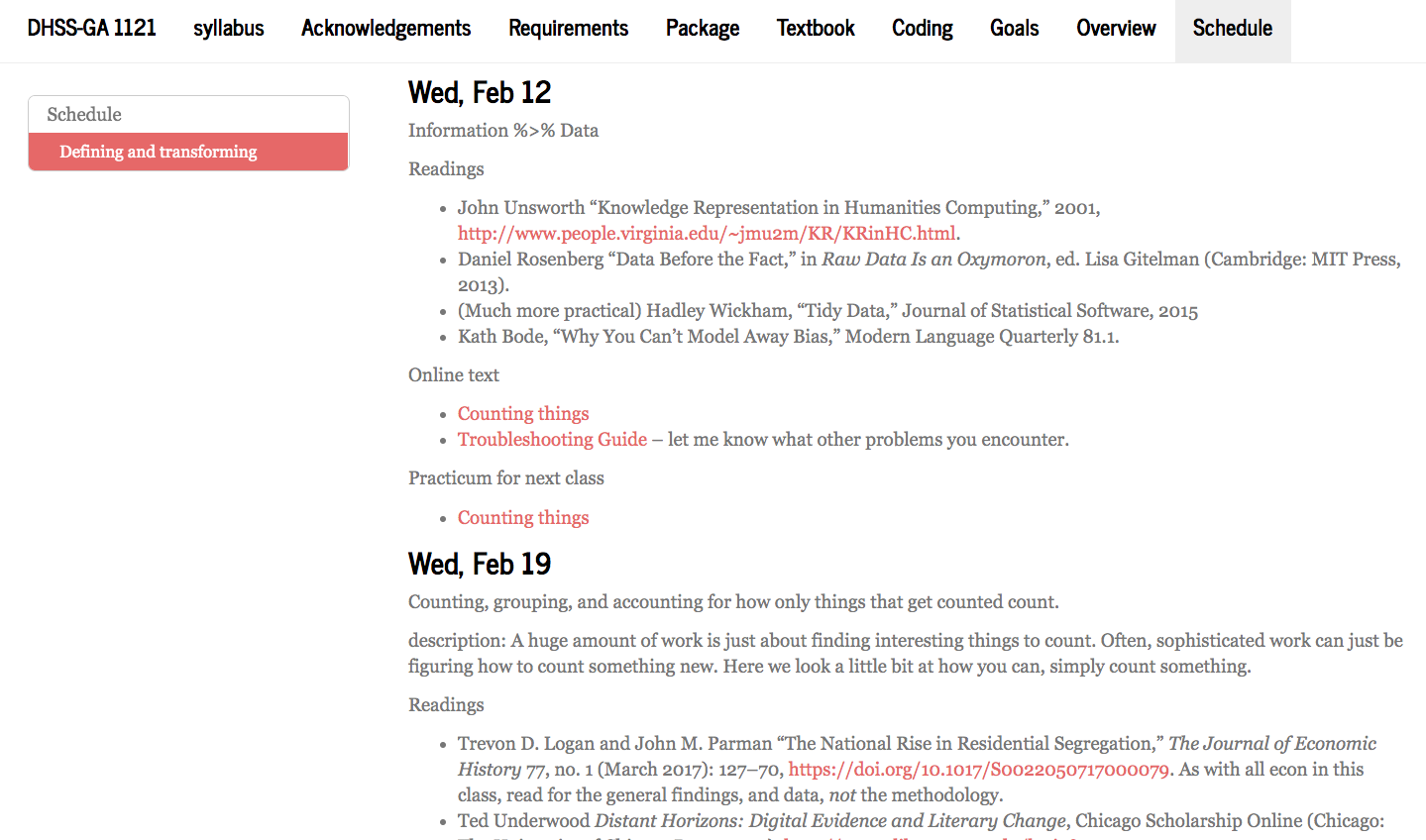Hathidy
Ben Schmidt
2020-03-12
Slides:
benschmidt.org/slides/hathidy
Package:
https://github.com/HumanitiesDataAnalysis/hathidy
Extracted Features
General vision: wordcount data should be able to meet scholars where they are.
- Languages: Sometimes R, sometimes python, sometimes javascript.
- Data formats: word count tables, term-document matrices, etc.

Teaching with HTRC features
- “Working with Data,” graduate digital humanities class.
- Syllabus-being-dismantled: benschmidt.org/WWD20
- Textbook-in-progress: benschmidt.org/HDA
Principle: counting, joining, and modeling are transferable skills that can be used on any data set.
So students need their own sets. Thus: 🐘
HTRC Feature Reader (python)
pandasintegration- Enables complicated transformation (casing, chunking, etc.) inside the package.
- Significant performance optimizations
- Built for iterating across thousands of texts
Hathidy (R)
tidyverseintegration- Use tidyverse and other packages (tidyverse, tidytext, etc.) for all actual analysis.
- Built for teaching, safe for research.
- Focused on fast access to token data.
- Push users towards particular formats.
HTRC Feature Reader (python)
- Pandas integration
- Enables complicated transformation (casing, chunking, etc.) inside the package.
- Significant performance optimizations
- Built for iterating across thousands of texts
Hathidy (R)
- Follow the established universe of R packages (tidyverse, tidytext, etc.) for all actual analysis.
- Built for teaching, but save for research.
- Focused on fast access to token data.
- Strong push towards particular storage formats.
Core principles for working with extracted features.
- You should only ever refer to Hathi books in code by HTID, not files;
- You should keep a local copy of every feature you’ve looked at;
- Because it’s faster, page-level token data should be cached in csv or parquet.
Fast access means fast to code and fast to load.
Uniform model; you must access by HTID. The user is only dimly aware there are files involved.
But there are; and they are cached on disk.
Currently using pairtree and csv; but that is likely to change to flat and parquet.